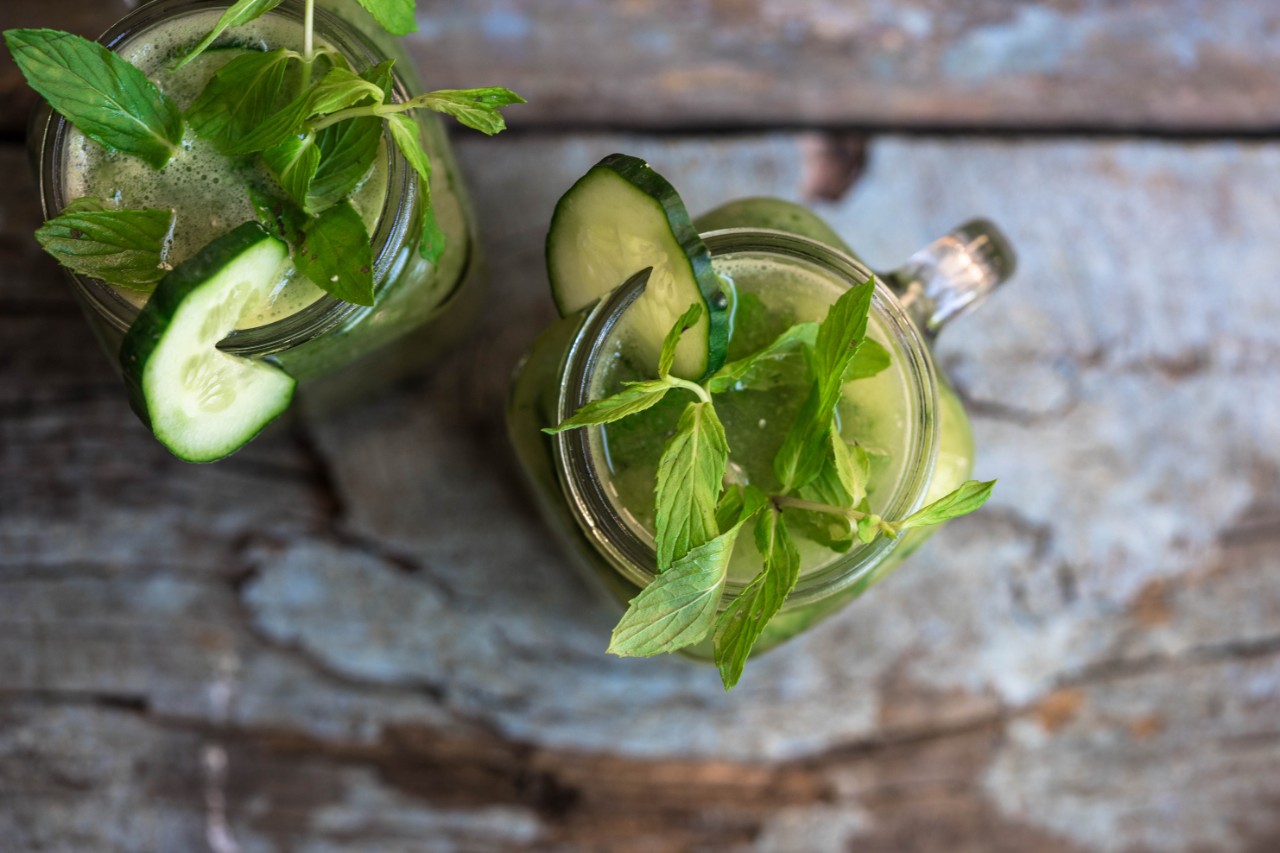Green smoothies – healthy or hype?
Green smoothies are currently all the rage, but are they really as healthy as people claim? Dietitian Béatrice Chiari believes these green drinks are a simple and tasty way of giving the body a concentrated shot of vitamins and minerals.

Why do smoothies have to be green?
The main reason – apart from the essential nutrients – is the chlorophyll. The green leaf pigment is one of the most powerful natural antioxidants. Chlorophyll can bind harmful substances and transport them away, thus freeing the intracellular space of harmful substances. This detoxifies the body and protects against many illnesses.
Are the effects of chlorophyll – or green smoothies – scientifically proven?
Where and how chlorophyll works has not yet been proven conclusively, but there are numerous studies that prove its antioxidant effect. Furthermore, a recent study conducted by Rush University in Chicago has shown that leafy green vegetables help prevent dementia. Even if all the facts aren’t yet proven by long-term studies, it is, of course, universally accepted that fruit and vegetables are good for you, and it’s recommended that you eat at least five portions of fruit and vegetables every day.
Do green smoothies have any other benefits?
Thanks to their high content of green vegetables and leafy greens, green smoothies are alkaline. This is important, because many people these days have a high acid diet as a result of consuming animal proteins, coffee and/or alcohol. Green smoothies also regulate blood sugar levels as they contain little fructose. Of course, you won’t feel any benefits from drinking just one green smoothie. Long-term effects have been identified, above all, in people who drink green smoothies regularly.
Do you need a special blender?
Yes. For the full effect, the green smoothie has to be blended very finely so it can reach the small intestine as quickly as possible. A standard hand blender leaves too many fibres in the drink. As a result, the heat and acids in the stomach break down the sensitive enzymes and vitamins during digestion.
What ingredients should be used in a green smoothie?
Any leafy greens can be used, especially lettuce, chard or fresh spinach leaves. You should use wild herbs sparingly, because their active ingredients are very potent and the detoxifying effect can, under certain circumstances, be too strong. Many people find that wild garlic, chives and varieties of cabbage – such as kale, which is so popular in Hollywood – don’t taste very nice and are harder to digest. You can add fruit and water to taste. I personally prefer to use organic fruit and vegetables to ensure that my smoothies are free of pesticides and other harmful substances.
What should you never put in a green smoothie?
It depends on whether you intend to drink the green smoothie in place of food or merely as a dietary supplement. As a supplement, the smoothie provides vitamins and minerals. In this case, it’s important that it contains only fruit, green vegetables and water. If you add fats, nuts, proteins, or starchy vegetables such as fennel or broccoli, the green smoothie will end up in the stomach and will be digested there. Some people, for example sportspeople or vegans, consciously use a wide range of ingredients in their smoothies because they often drink them in place of meals.
Can anyone drink green smoothies?
Generally speaking, yes. The only exception is people with specific allergies. People with a sensitive stomach can also drink green smoothies with leafy vegetables because they’re alkaline and good for gut health. However, in this case it's important to use fruits with a low acid content, such as berries.
Wild herbs for the green smoothie!
You can also collect some of the ingredients for the green smoothie yourself. And almost all year round. Important: Many herbs have a strong effect, so less is more. Here you can see what is suitable and when you can find what in nature:
accredited Qualified nutritionist (SHS), green smoothie expert


